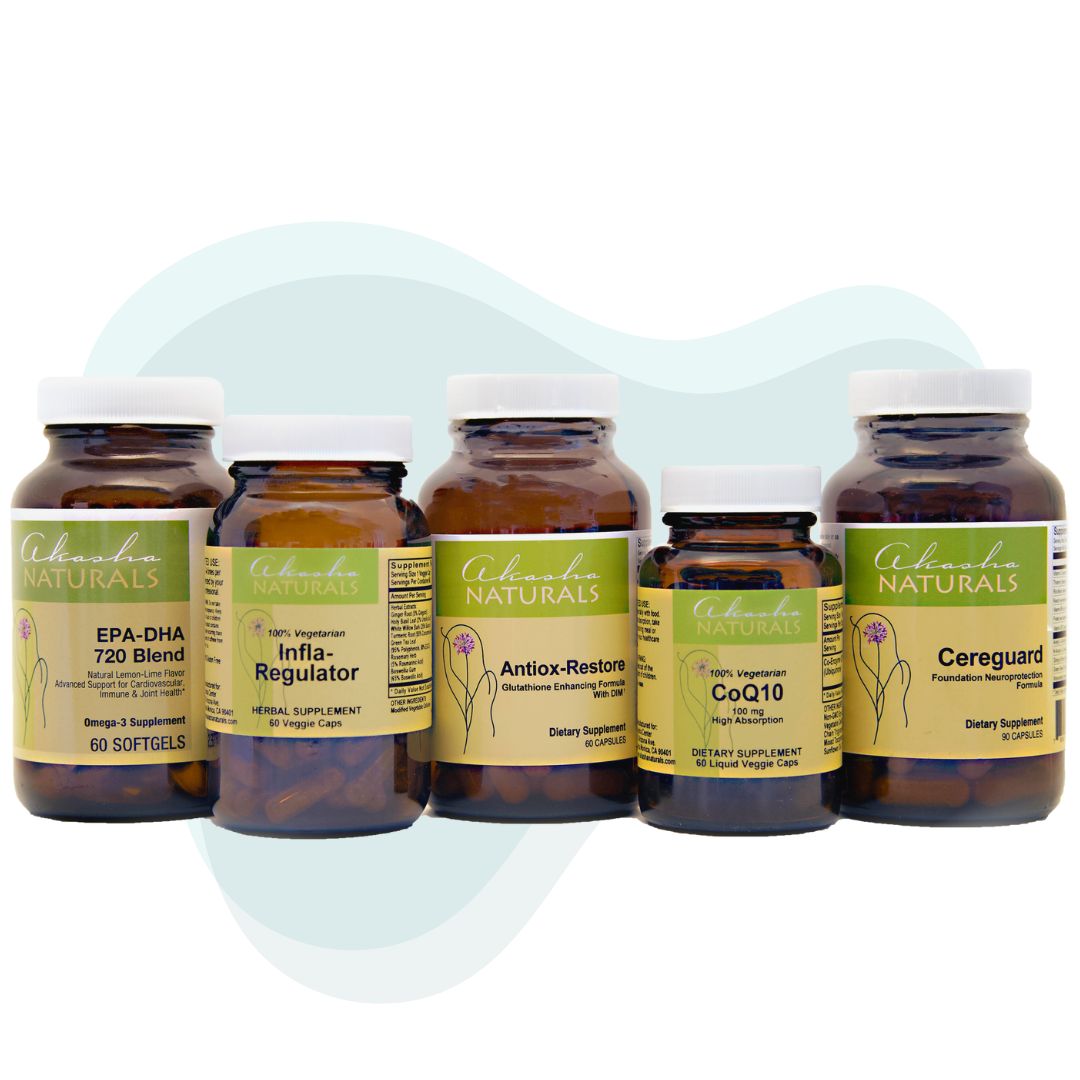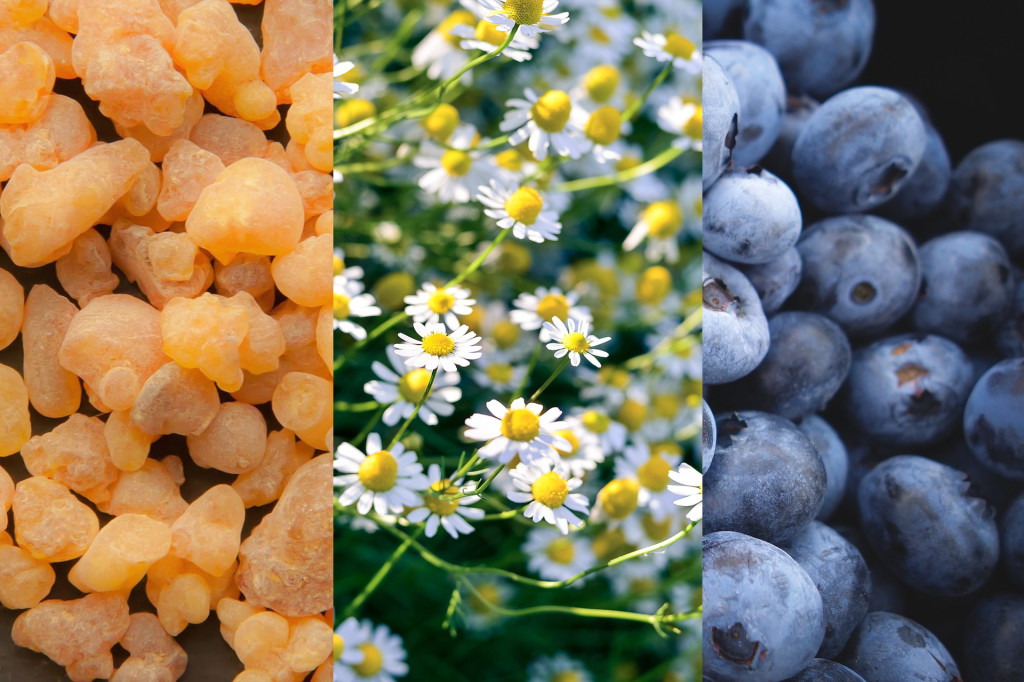Warm weather means more motion and a 50% higher risk of achy muscles and joints. Luckily, you can keep moving with ease, naturally.
Boswellia
Question:
- What is the ancient herb boswellia, and why might it lessen knee pain and arthritis in other areas, i.e., what’s happening within the body when we take it? What’s an appropriate dosage?
Answer: Frankincense oil, the common name for the resinous extracts derived Boswellia is part of the Burseraceae plant family. Derived from a plant native to India, Boswellia serrata contains compounds that have been found to have strong anti-inflammatory, and even potentially anticancer properties. The use of this herb for muscular skeletal much precedes the discovery of NSAIDS (non-steroidal anti-inflammatory drugs) and was used to treat all sorts of inflammatory conditions, such as arthritis, heart disease, inflammatory bowel disease, to name a few. In fact, Boswellia serrata extract is so powerful studies have shown that it is comparable to NSAIDS, which is now the most used anti-inflammatory/pain reliever over the counter medication in the United States.
But why has this pant extract ben so widely used? Because in the past several decades research has given us a better understanding of how boswellia and frankincense oils may benefit our health and optimize the immune system. This powerful herb possesses many different chemical compounds that effectively help regulate the immune system by inhibiting a very important pro-inflammatory compound in the immune system called cytokines, which are chemical mediators known to damage DNA and increase tumor growth while destroying the healthy cells of the immune system. Extracts of Boswelia lower inflammation and support immune function on multiple levels.:
- Decreases Inflammation, such as in joint pain and arthritis
- Strengthens the immune system and thus helps prevent autoimmune disease
- May Help Fight Cancer
- Regulates production of immunoglobulin (igM) antibodies found mainly in the blood and lymph fluid as well as immunoglobulin G (IgG) antibodies whose function is to protect us from bacterial and viral infections
- Delays reactions to sensitivities
- Helps regulate white blood cells (lymphocytes) and T-cells interactions
Dosage: Boswellia can be taken either as a supplement or used as a frankincense essential oil. The befits of the Frankincense oil have also been documented and ranges from healing the skin to speeding up recovery for many medical conditions, making it one of the most widely used essential oils in the world.
Directions:
- Place a couple of frankincense essential oil (preferably organic) under the tongue, on the roof of your mouth – or mixed into tea to safely take it internally. A diffuser, which helps decrease mucus, cleanse the nasal passages, and ease pain from respiratory or sinus conditions can also be used
- Fordirectapplicationtotheskin, itisbesttomixitwithcoconutoilorJojobaoil (effectivecarrieroils). Beforeusingitonlargerareasoftheskin, Irecommendthatapatchtestbefirstusedfirsttomakesurethattheoilwillnotcausesrash. Forthosepronetoallergiesorasthma, addafewdropstoaclothandinhaledeeplyseveraltimesperday.
- But if you would rather take boswellia in supplement form a good quality and organic Boswellia Seratta, Boswellia Sacra or Boswellia Carteri will help
- Standardized extracts that contain at least 37 percent boswellic acids, might be labeled as boswellin. Higher percentages of 65% or higher are more effective. The dosage depends on how concentrated the extract is and the level of boswellic acids present.
For those who prefer a tablet form, the following dosages of boswellia are often recommended:
- For lowering inflammation, 600 to 900 milligrams of boswellia standardized (60 percent to 65 percent boswellic acid). This dosage might require taking several capsules daily.
- For treating inflammatory conditions like arthritis, osteoarthritis, asthma, chronic pain, inflammatory bowel disease or injuries, try a higher dose between 900–1,200 milligrams per day.
Here is what I personally take to help me stay pain free:
- Akasha Naturals Infla-Regulator (rich in Boswellia, turmeric, and other anti-inflammatory herbs): 1 in AM and 1 in PM
- Akasha Naturals’ Muscle PM (Magnesium, a muscle relaxant plus herbs): 3 at bedtime (also a potential sleep aid.
- Akasha Natural’s Joint Ease: (selective pain mediator): 1/ AM and 1/PM
CHAMOMILE FOR MUSCLE SPASMS
Chamomile contains 36 flavonoids, compounds that have anti-inflammatory properties. Its essential oil can be massaged onto affected muscles to provide relief from spasms. Chamomile tea can also help relax sore muscles.
Question:
- What is chamomile and why does it work so well for lessening muscle spasms and relaxing sore muscles?
Answer: Chamomile can be uses it as a cream, or brewed as a tea to reduce muscle spasms and relax sore muscles. It is packed with flavonoids, which are known for their antioxidant and anti-inflammatory health benefits.
Sometimes called an “herbal aspirin, the dried flowers of chamomile contain terpenoids and flavonoids contributing to its medicinal properties. Flavonoids are known for their antioxidant and anti-inflammatory health benefits, as well as their contribution of vibrant color to the many of the foods we eat (the blue in blueberries or the red in raspberries). Terpenoids act as a neurotransmitters reuptake inhibitors, neurotransmitters as in as serotonin (similar to Prozac) to promote well-being. And they also enhance norepinephrine activity (similar to tricyclic antidepressants like Elavil), increase dopamine activity, among another property. Hence the “well-being and calming effect of Chamomile.
Question: what’s the best technique for massaging massage chamomile essential oil into affected muscles? How might sipping tea help relax sore muscles head to toe, and how much should readers sip how often to relieve and ward off spasms?
Answer: Chamomile tea is the most popular way to enjoy the plant’s calming effects, easily available in any grocery store. (Organic tea is best, since pure tea leaves contains the most benefits.) Chamomile oils, powders, and tinctures are more effective for muscular skeletal pain. Rub it directly on the area that’s bothering you. (The essential oil can be used as an aromatherapy treatment to ease tension, relax and fall asleep more easily.
Chamomile preparations are commonly used in many different parts of the world to treat many ailments such as inflammation, muscle spasms, menstrual disorders, arthritic like- pain and hemorrhoid. Although herbal tea is the most popular form, Chamomile oil has also been shown to be very effective for muscular-skeletal pain when rubbed directly unto the area of the pain. Chamomile has been shown to naturally lower pain associated with arthritis, injuries, fevers and back pain. Its use in pregnancy and labor has been well-documented. In Mexico, as well as in other parts of the world, chamomile tea is given to women after labor to relax their abdominal muscles and help them rest. Even in tooth ache in babies, Chamomile effectiveness has been documented.
BLUEBERRIES
A recent study suggests that consuming blueberries before and after physical activity can accelerate recovery from muscle damage (https://www.ncbi.nlm.nih.gov/pmc/articles/PMC3583121/). Blueberries have antioxidant powers and have been shown to decrease oxidative stress and inflammation.
Question:
- Why might drinking a blueberry smoothie before and after a workout help speed muscle damage recovery and prevent muscle aches, i.e., what do components in blueberries do for the body? What quantity of blueberries should one consume for the effects?
Answer:
Yes. It would be one of the best things you could give your body. Blueberries are what I like to call The King of Superfoods. This super food is widely known for its unbeatable anti-inflammatory health benefits. Eating blueberries can minimize muscle soreness after exercise I recommend you get about 2-2.5 cups a day. And research has shown that freezing the superfood actually increases the berry’s nutritional content — so freezing them and adding them to a smoothie is a great way to get those benefits.
Blueberries may actually be the world‘s healthiest food:
There are the two most common types: A. Highbush blueberries are the most commonly grown species in the US. B. Lowbush blueberries are often referred to as “wild” blueberries. They are typically smaller and richer in some antioxidants. Blueberries are among the most nutrient rich and dense berries. For example, A 1 cup serving (148 grams) of blueberries is known to contains:
Fiber: 4 grams. Vitamin C: 24% of the RDA. Vitamin K: 36% of the RDA. Manganese: 25% of the RDA. In addition, they are also about 85% water, with only 84 calories per cup and 15 grams of carbohydrates.
Blueberries are also, an excellent source of the antioxidant-like vitamins (K, C), fiber, manganese, selenium, zinc, phosphorus – as well as a rich array of powerful antioxidants, such as carotenoids, (lutein, zeaxanthin etc.), flavonoids (like rutin, resveratrol, quercetin etc.). Some healthcare providers believe that if one can only make only one change to their diet, it should be to add blueberries. Studies have shown that blueberries decrease the risk of breast cancer, colon cancer, esophageal cancer, and cancers of the small intestine. In addition, it increases HDL (the good cholesterol) decreases blood pressure, and lowers blood sugar levels.
How does it relieve pain? Muscular skeletal pain leads to muscle soreness, fatigue and consequently inflammation and oxidative stress in the muscle tissue, blueberry supplementation has been shown to reduce the damage that occurs at the molecular level, minimizing soreness and a reduction in muscle performance after strenuous exercise. But that is more, new research has shown that freezing the superfood actually increases the berry’s nutritional content. That is, frozen blueberries are equally nutritious as fresh blueberries, even after six months of freezing. In fact, researches have noted that noted that freezing actually increased the anthocyanin concentration.
Blueberries top the list along with strawberries and pomegranates in antioxidant capacity. Organic blueberries have higher nutritional content than conventional ones. A study directly compared the total antioxidant capacity of organically grown versus non-organically grown blueberries and found that the organic blueberries had significantly higher concentrations of phenol antioxidants and total anthocyanin antioxidants than conventional berries.
In addition to its well documented benefits in muscle recovery secondary to pain, this king of all super food also protects the eyes, optimizes heart function, and reduces the risk of Alzheimer’s Disease/Dementia. How? Because the Anthocyanin found in blue berries improves memory and mental fluidity help protect against brain cell loss. They stimulate nerve cell growth and facilitate better communication between nerve cell processes, in turn slowing the aging process. They do so because of its rich range of powerful antioxidants together that protect nerve cells from the by-product of oxygen that lead to neuronal damage. They also offer protection from toxic heavy metals and helps control blood Sugar. Their action against heavy metal, aid in blood sugar metabolism, and ability to eliminate free radicals to protects us from everyday exposure to environmental toxins is like no other.
WHAT ELSE:
- Proper diet
- Exercise,
- Excellent hydration before after exercise – and throughout the day
- And remember to stretch before and after every exercise. Because stretching lengthens the muscles and increases range of motion… so you’ll give your exercises a boost while protecting yourself against injury.
Dr. Edison de Mello is the Founder and Chief Medical Officer of the Akasha Center for Integrative Medicine. If you would like to make an appointment please call 310-451-8880 or email us at info@akashacenter.com





